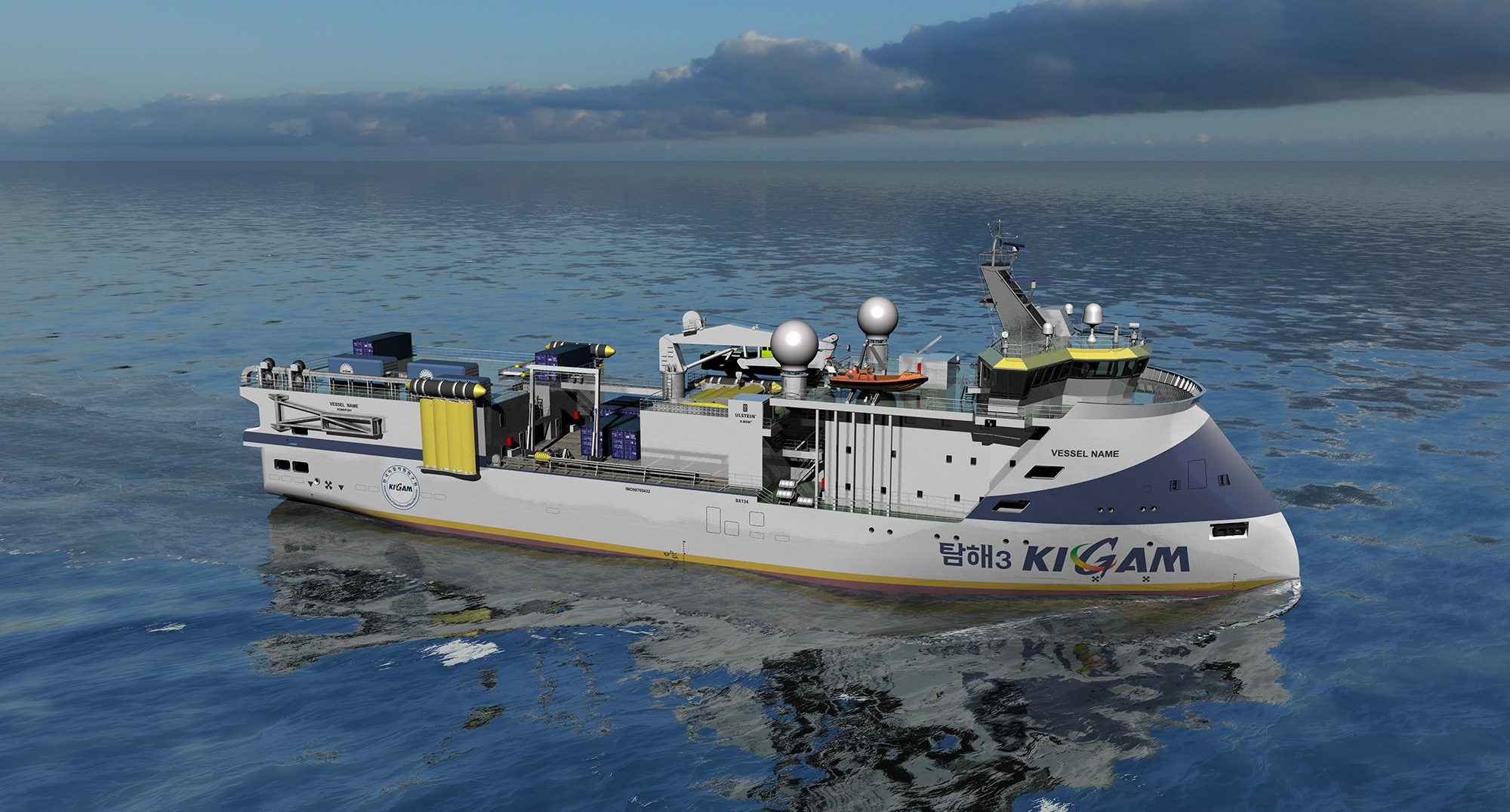Ulstein has entered into an agreement to build an Ulstein SX134 design at Hanjin Heavy Industries & Construction Co in South Korea. The 92-metre-long and 21-metre-wide ship will be built for the Korea Institute of Geoscience and Mineral Resources (KIGAM).
The vessel will fulfil the general demands of the seismic and oceanographic research industry for operations of seismic streamer cables, seismic bottom nodes, seismic high-resolution seafloor mapping, seafloor survey and sediment sampling.
Research equipment
The vessel will function as a base for up to thirty researchers, and will additionally, accommodate a crew of up to twenty. The vessel has been designed to include a variety of installed equipment, such as a 3D/4D seismic 8-streamer system, high resolution 2D/3D seismic P-cable system, a multicomponent OBN acquisition system, a Marine Gravity and Magnetic system, Multibeam and Single beam echosounders and auxiliary equipment for in sea acoustic sounding systems.
Also read: Ulstein lands follow-up contract for first Jones Act rock installation vessel
Further, the vessel incorporates a Deep Sea Chirp Sub-bottom profiler, an Acoustic Doppler Current Profiler (ADCP) and a High profile Underwater Positioning system. Sediment samplers and geochemical analysis equipment are available for the on-board researchers.
X-Bow
The X-Bow hull line design leads to reduction in slamming and vibrations, which makes it very suited for research operations. This design increases the operability of the vessel, reduces speed loss and will have an improved effect on recording of data when in operation. The design with its modern technology is said to ensure efficient operations with less fuel consumption. The onboard comfort is also improved by the X-Bow.
In 1996, Ulstein’s own shipyard Ulstein Verft delivered another vessel to KIGAM, the Tamhae II.
Also read: Ulstein presents zero-emission turbine installation vessel design








